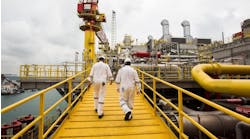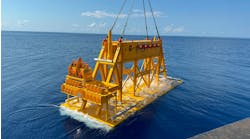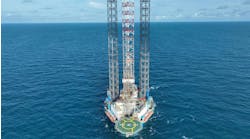Eldon Ball, Houston
Upstream mergers & acquisitions were near an all-time high last year and will continue to increase in pace this year. That’s the conclusion ofInternational Editor Pam Boschee in her special report on International E&P this year.
The increase in the number of 2005 upstream transactions and their values may be viewed as indicative of the health and wealth of the E&P industry globally, she says.
As corporate deal count rose 40% year-over-year, expenditures on corporate acquisitions more than tripled to $120 billion. Contributing to that climb was the ongoing five-year trend of a steady increase in the value of asset transactions.
The recently closed ConocoPhillips-Burlington Resources deal tops the list at $36.4 billion.
Sights were set on companies with multi-regional assets as buyers looked to capitalize on growing international markets.
North American transaction value increased 30% to $48.4 billion, but represented only 30% of total global transaction value. The acquisition of companies with international portfolios represented 43% of total global transaction value, accounting for $68.4 billion.
And the action is far from over. Check out her report.
Fast-track development
Given the industry’s favorable pricing environment, operators are taking unconventional approaches to fast-track production.
Take ATP Oil & Gas’ latest deepwater development. The independent achieved first production on March 9 through a converted semisubmersible production facility on the Gomez field in Mississippi Canyon block 711.
The is the first unit of this type installed in Gulf of Mexico waters since 1995 when Enserch Exploration produced oil through a converted semi installed on the Cooper field in Garden Banks block 388. TheEnserch 388, or Enserch Garden Banks was later decommissioned in 1999.
Senior Editor David Paganie talked to ATP Chief Operating Officer Leland Tate about the concept, economics, and execution of the development plan that used the converted Rowan Midland, purchased from a subsidiary of Rowan Companies in October 2005 for $60 million, to serve as the floating production hub for the area in and around the Gomez field.
Cal Dive becomes Helix
Helix Energy Solutions, formerly Cal Dive, is “taking the cycle out of the industry,” or “smoothing out the cycle,” as they say, in such a way that the company will be prepared to maintain an economically favorable revenue stream during the good times and bad.
Helix has been methodically building up its “cycle-free” approach over the past several years, with the intent of becoming a full-service, integrated energy company.Offshore’s David Paganie talked to Helix executives Owen Kratz, chairman & CEO; Wade Pursell, senior VP & CFO; and Martin Ferron, president, to get their perspective on the evolution of this model. Don’t miss his report.
• • •
Finally, Petrobras is making progress in its quest to produce and process heavy crude from offshore deepwater fields. Petrobras has completed FEED work on an innovative concept for an FPSO for heavy crude oil processing in very deep waters. TheP-57 will start operations in 2009 on Phase 2 of the Jubarte field development. Special Correspondent Dayse Abrantes describes the technolgy and future heavy oil development plans in her exclusive interview with Marcos I. Assayag, basic engineering general manager for upstream and downstream at Petrobras’ R&D center Cenpes.


